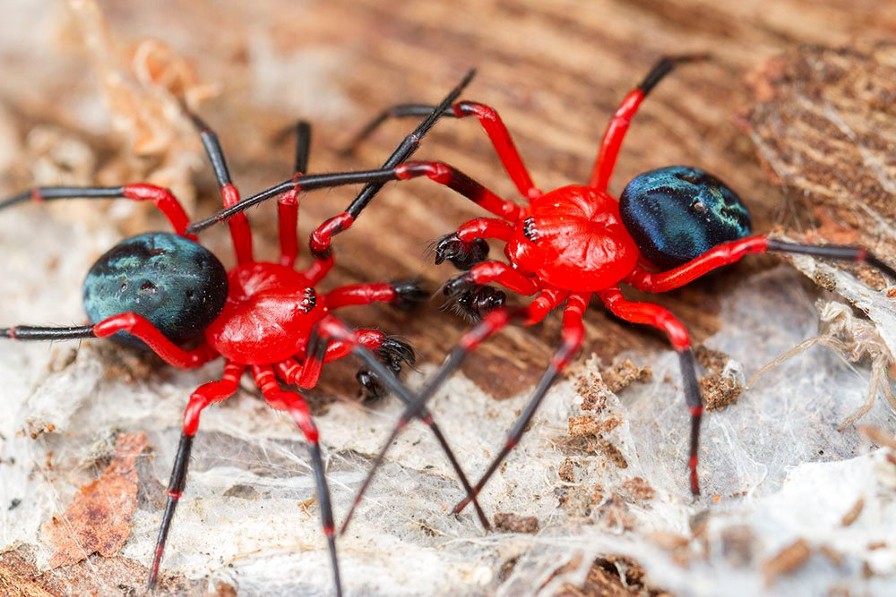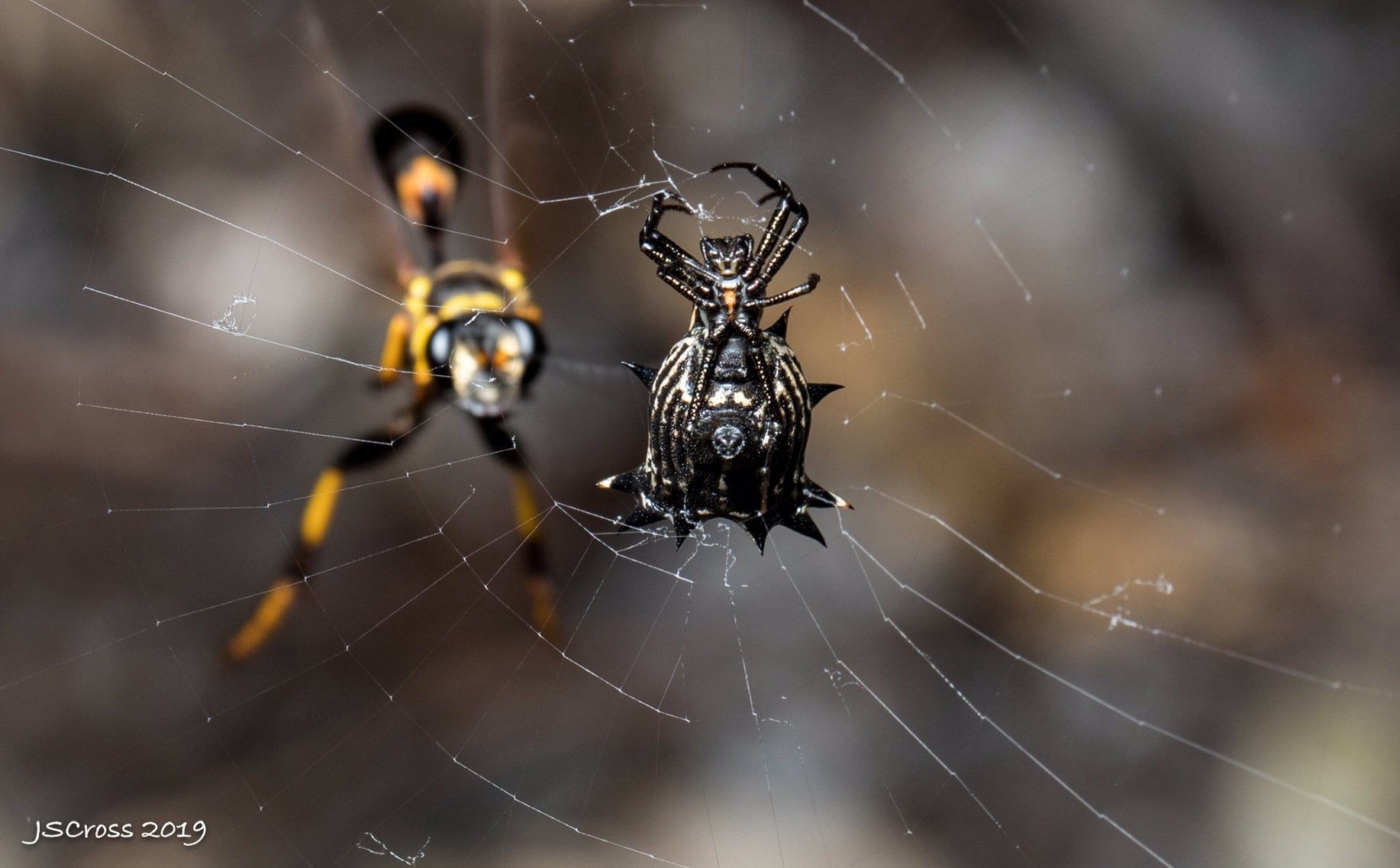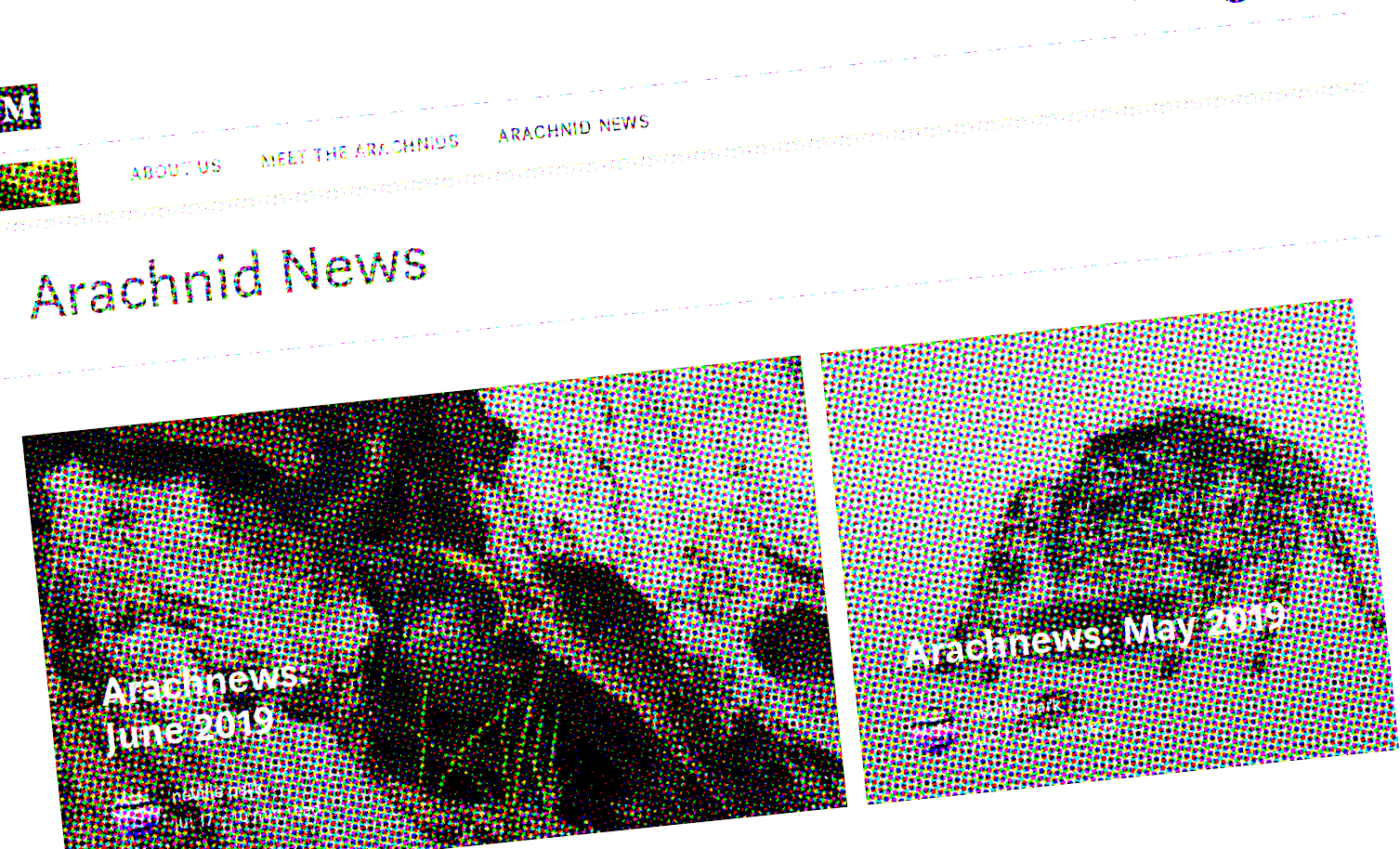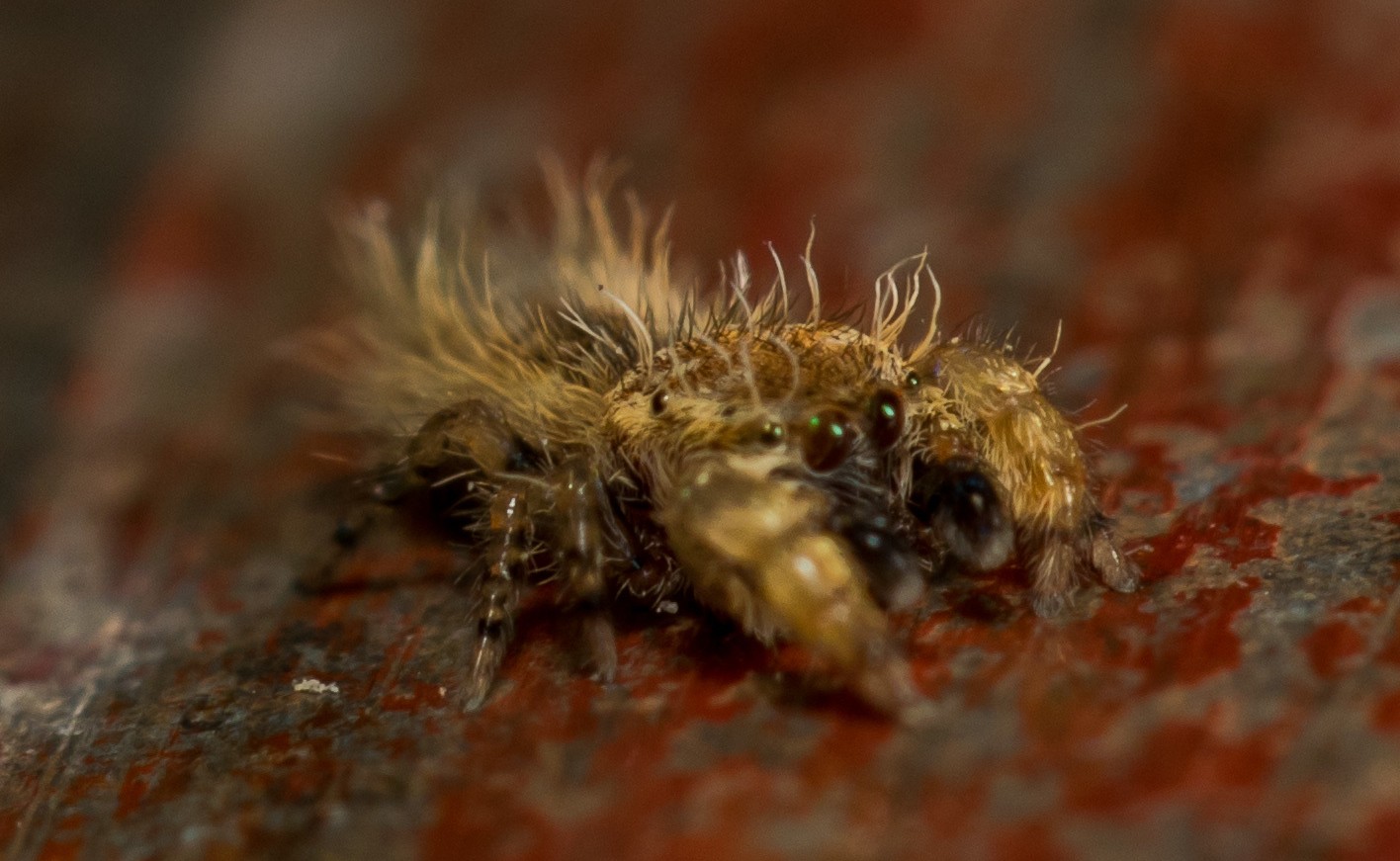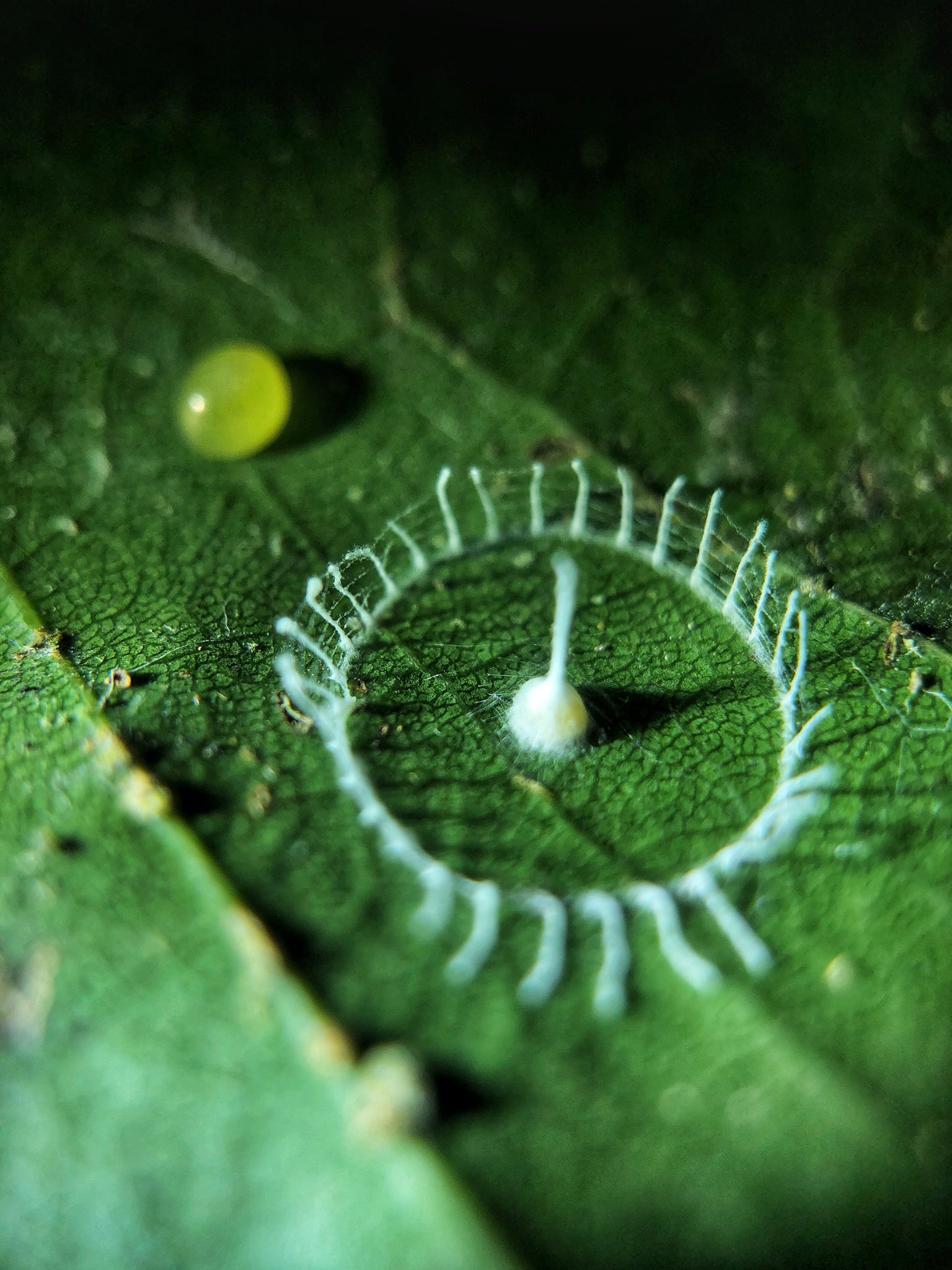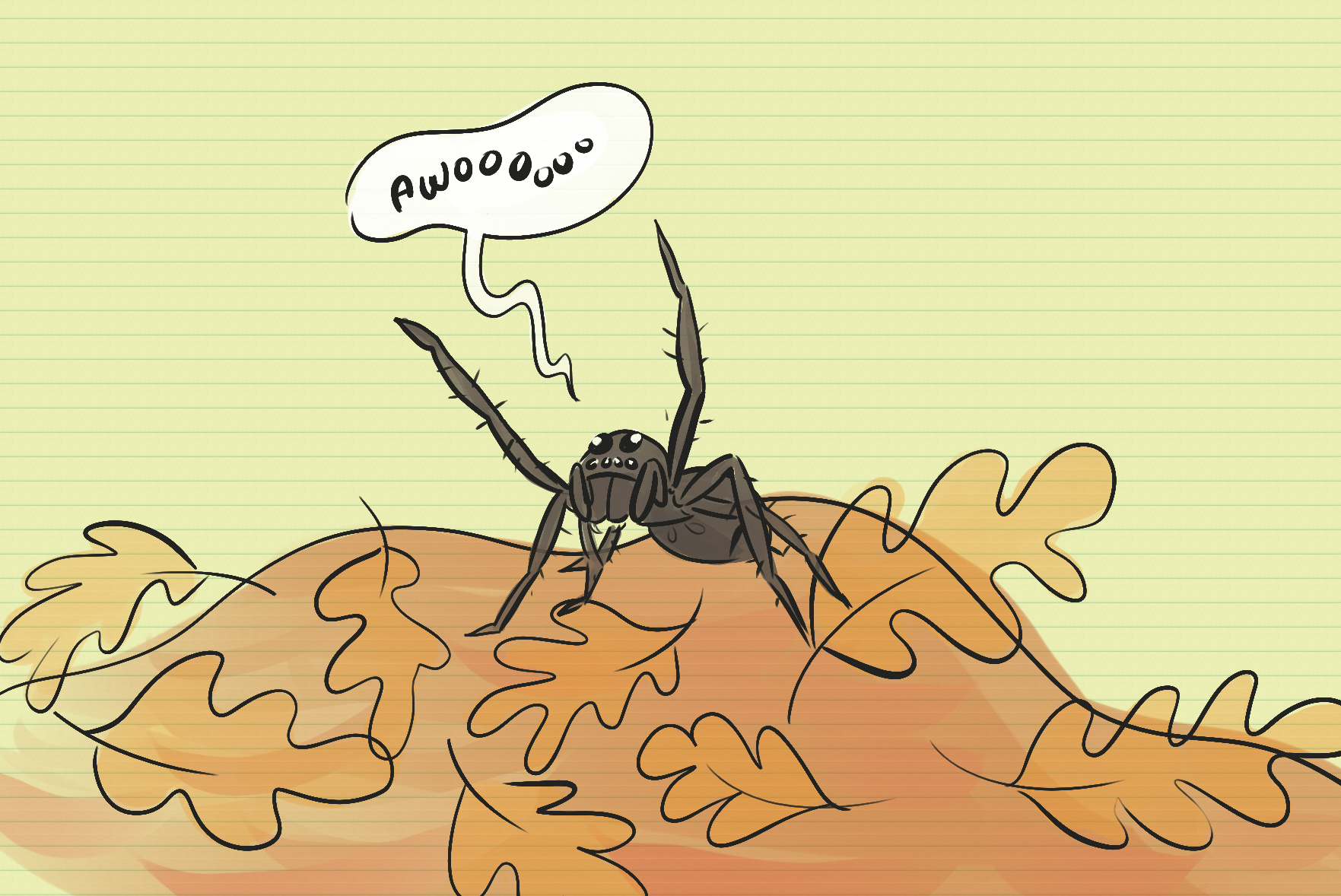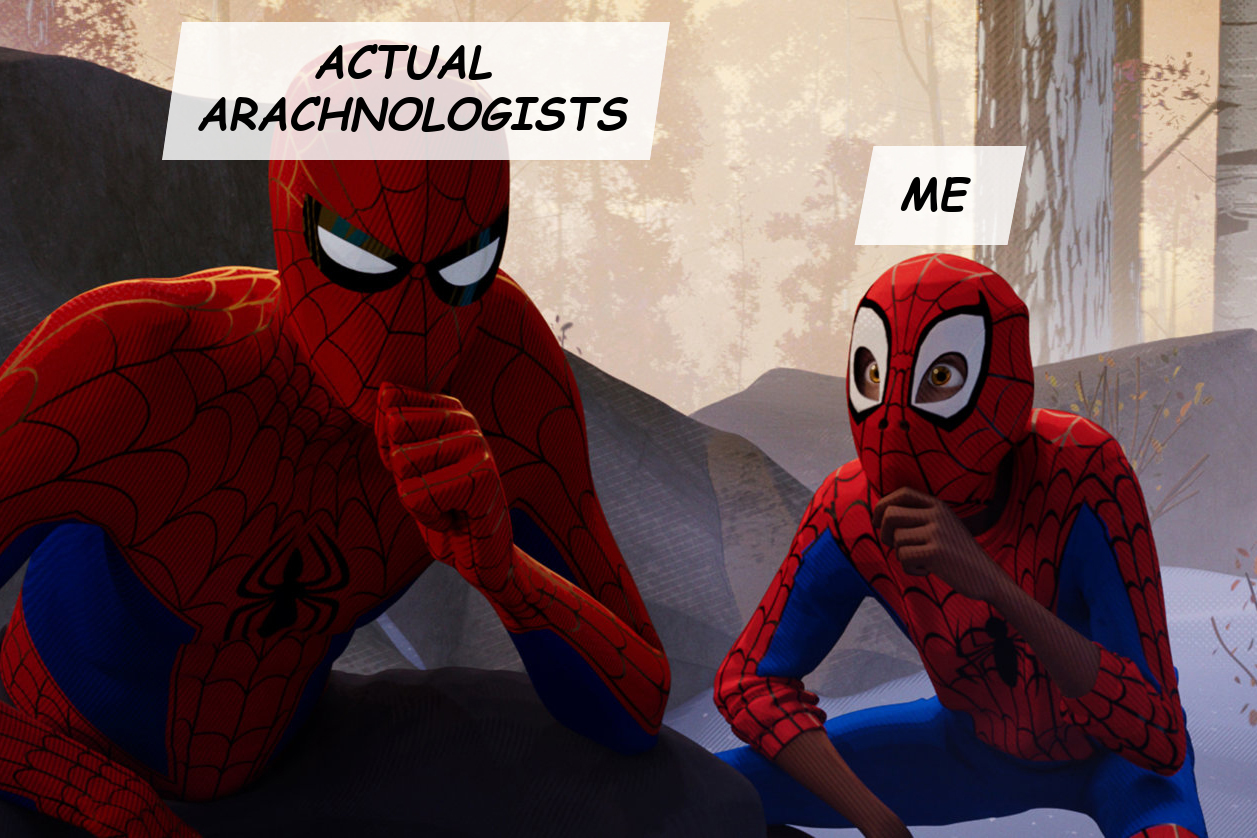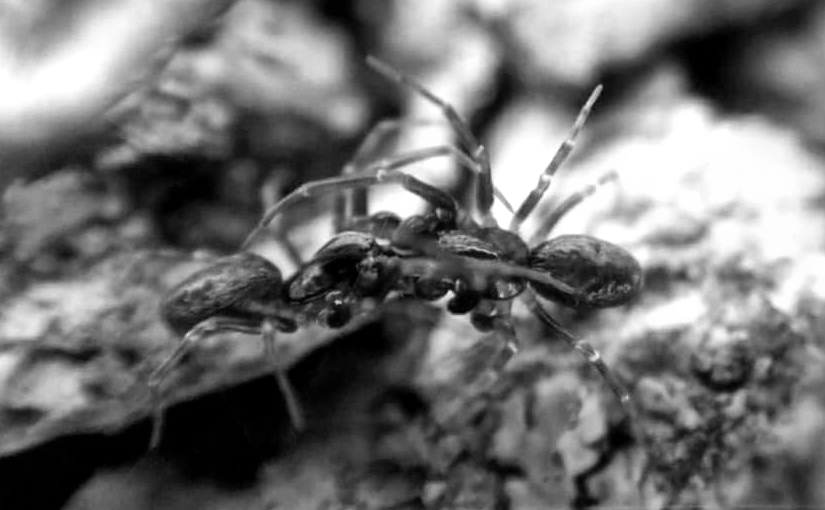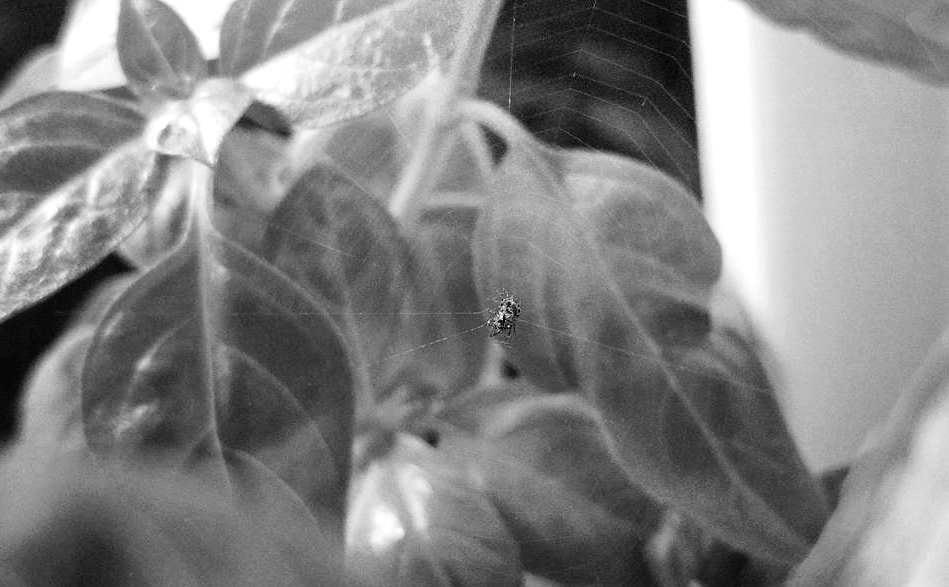This slideshow requires JavaScript.
So last November, I found dozens of tiny baby orbweavers in my bathroom. They were probably the offspring of the big grey cross spider who lived just outside the window, feeding on insects attracted to the building lights.
It was bad timing. Grey cross spiders do most of their courting and mating in the fall. The spiders guard their egg sacs into the winter, until they die. In spring, the babies emerge and go their separate ways. Most will die soon after; a lucky few will survive to continue the cycle. I don’t know why this batch hatched.
I painstakingly evicted at least a dozen, but the next day they were back. I decided to let nature take its course. Over the next few weeks, they gradually disappeared, to starvation or cannibalism or other insect predators. Then, one day, I saw one I’d missed. She had woven the tiniest of webs in the basil plant on the kitchen windowsill. All her siblings had died, but somehow she had made her way to this small oasis.
It was one thing to let the spiders starve to death when they were just black specks on the bathroom ceiling, but I felt a vague sense of responsibility to this lone survivor, and decided to keep her alive as long as I could.
Continue reading Winter Spider Diary
